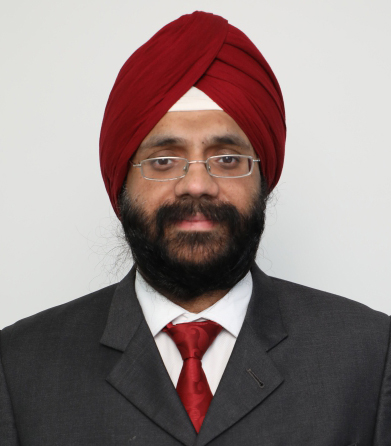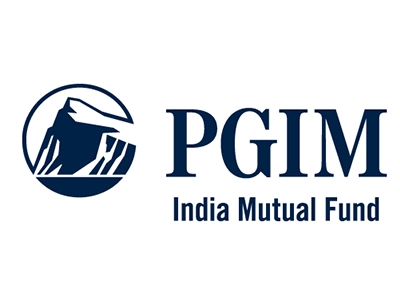 You have been managing debt funds for close to two decades now. What are your three key learnings over the years?
You have been managing debt funds for close to two decades now. What are your three key learnings over the years?
I have been managing debt funds over the last two decades and it’s difficult to compress it in just a couple of points but will try to highlight some key learnings.
- Risk Management: I have learned over the years that managing risk is an integral part of the fund management process and thus I will put risk management at the top of my learning. Taking optimum risk leads to long term outperformance and alpha generation. We have constituted internal limits which are more as a prudent practice.
- Taking a long term view: I believe that sustained long term outperformance can only come if one stays away from short term noise and takes a long term view. I always try to avoid momentum play and construct portfolio with a long term view in mind. Case in point was all the noise about floating rate bonds last year which has faded now; we stayed away from having a substantial weight of floating rate bonds in our funds and our call played out well.
- Keep learning: Nobody can predict the market and one has to constantly look at one’s base assumptions and the evolving or changing news flow and fundamentals. One should be ready to take corrective actions if the view is not going right. Staying humble in market and acknowledging one mistake‘s also goes a long way in fund management.
Debt fund returns weren't good in 2021 and may dip further this year due to possibility of a rate hike and high government borrowings. Why do you believe that distributors should continue to recommend debt schemes over traditional fixed income instruments, which have been yielding better returns?
Debt funds, in my view, will always offer a better return than the traditional fixed income instruments if one keeps in mind the liquidity of investment . As the yields are currently low from a historical perspective, the returns on fixed income funds have been on the lower side but going ahead over the next couple of years, yields are expected to rise which would increase the returns of debt funds. Also, debt funds are present across categories and investors can choose to invest depending upon their investment horizon and risk appetite, which is not the case with the traditional fixed income instruments, where the product may not be suitable across investors and investors do not have the choice or the range.
Q. What is your near-term outlook on the debt market?
We expect RBI to start raising rates during the course of FY 23. We expect 75 bps hike in the policy repo rate by April 2023. In view of RBI’s dovish guidance, we expect the curve to remain steep over the next couple of quarters as short term yields will remain largely stable on back of abundant liquidity and RBI’s dovish stance whereas long end yields can be volatile given the hardening in global bond yields and the high fiscal deficit for FY23.
PGIM India Equity Savings Fund is among the best performing funds in the category if we look at 1-year returns. What are the three things that have contributed to this performance?
In the equity portion, our strong process has been the key. The overarching strategic principle for us is “Growth at Reasonable Price” (GARP) with focus on large and midcap space. So, while we are growth focussed, we are not keen on “Growth at any price”. Having said that, we have been fine with paying a reasonable premium if the growth and quality metrics so demand. Our study of MSCI All Country World Index’s constituents over more than 2 decades revealed that the highest quintile of earnings growth has outperformed over the long run. Again growth is a relative term. Apart from absolute growth, we also look at relative growth, i.e. ability to gain market share.
We look for companies having positive operating cash flows (OCF) in at least 7 out of last 10 years. OCF depicts cash generating abilities of company’s core business. Typical business cycle is of 5 years. In 10 years there is likelihood of business going through at least one downturn. Analyzing data for 10 years gives us insights on ability of business to generate OCF at the bottom of the cycle. Businesses with ability to generate +ve OCF at the bottom of the cycle are the ones that are likely to survive and do well in next up move. Our study of Nifty 500 Index constituents over last 10 financial years showed that average CAGR of companies with 7 or more positive OCF years in last 10 was 14.7% vs 5.2% for those with 6 or lesser years of positive OCF.
We look for companies having manageable levels of debt, hence like debt to equity ratio (D/E) < 3x. Our study of Nifty 500 Index constituents over last 10 financial years showed that average D/E of top decile performers was 0.6x vs 2.4x for bottom decile performers.
All these need to come with reasonable capital efficiency, such that return on capital is more than cost of capital, thereby allowing to the company to have some Economic Value Added (EVA). Our study of Nifty 500 Index constituents over last 10 financial years showed that average return on equity of top decile performers was 21.6% vs 7.7% for bottom decile performers.
A fairly concentrated and curated portfolio of high conviction ideas with growth visibility along with active shift of weight in unhedged equity portion contributed to the overall performance. Also, sectoral allocation of being overweight on Industrials and materials and riding the IT outperformance wave and then booking profits have helped us.
In the fixed income portion, our strategy has been to cut both duration risk as well as credit risk. A high quality portfolio with low duration contributed to the overall performance.
PGIM India Equity Savings Funds maintains average maturity of less than a year. What is the rationale for this?
We are expecting yields to rise going ahead and hence, have kept the duration low in the PGIM India Equity Savings Fund. The strategy is to keep duration low up to 2 years and be underweight on corporate bonds as we expect corporate spreads to rise over the next one year as credit offtake picks up and economy improves.
Most investors lack clarity on the utility of equity savings fund given its distinct character. Can you tell us when and to whom this fund suits the best? Also, which financial goals can be addressed through this category?
The equity savings scheme is a mix of equities, fixed income and arbitrage thus providing exposure to three relatively low correlated asset classes and can be suitable for various kind of investors. It offers a disciplined approach to asset allocation along with low volatility, diversification and tax efficiency. Asset allocation within a pre-defined range helps in the risk-return profile of the fund, which can ensure discipline and resistance to emotions while investing.
PGIM India Equity Savings Fund may be suitable for different objectives like deployment of money for short to medium term with some potential to participate in the upside. The risk-reward characteristics of such a strategy can be expected to be between a pure equity and a pure fixed income scheme. The scheme can also act as a source scheme for STP transactions, where investor can look to park a lumpsum and shift systematically. The scheme has flexibility in terms of exit load for both switch and STP transactions. Last but not the least, it provides taxation efficiency as it is treated like an equity-oriented scheme.
In recent times, ultra-short term funds have done better than liquid and overnight funds across short-term horizons. Should ultra-short term funds be investors' first choice for parking cash instead of liquid?
As RBI has maintained a dovish stance and refrained from raising even the reverse repo rate, the ultra-short term category has outperformed the liquid and the overnight categories. We expect that this outperformance can sustain as RBI will take a calibrated approach even while raising rates and if an investor has 3 to 6 months investment horizon then they can increase their allocation to the ultra short term category.
What are the key risks associated with ultra-short term funds?
Ultra-short category by mandate runs a very low duration and hence, the duration risk is pretty low . On credit risk, it varies across funds as to what kind of credit risk they are taking in their portfolio, so there is minimal duration risk but the credit risk will depend upon an individual fund. PGIM Ultra Short Term Fund is a AAA Fund and does not take any credit risk in its portfolio. Thus, the PGIM India Ultra Short term fund has low duration and credit and is quite suitable for investors with low risk appetite.
PGIM India Ultra Short Duration Fund has consistently outperformed its benchmark. What has contributed to this performance?
An active portfolio management style and good duration calls have led to better performance of the PGIM India Ultra Short Term Fund.






